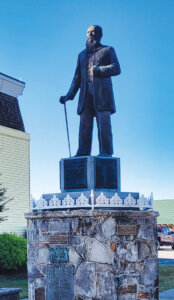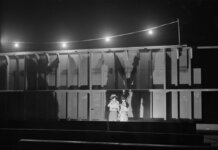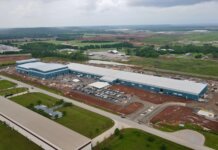
Drew Green isn’t German, but as director of the Cullman County Museum, he knows a lot of German history, particularly as it pertains to Cullman.
“I’ve been doing this for a while,” he says of talking to folks about the Cullman-Germany connection. “I’ve talked to people from all over the world.”
And those talks all start with one man, John Cullmann, who came to the U.S. from Germany in 1865, buying some land from the Nashville-Montgomery Railroad and establishing the town of Cullman in 1873.
“John Cullmann was our founder, and his goal was to start a German colony here,” says Green, whose father, Don, was a two-time mayor of Cullman. “Cullmann was a very good salesman, especially in Germany. He convinced thousands and thousands of Germans to move to this area. For the first 25 years in Cullman, if you didn’t speak German, it was hard to do any kind of business here.”
Back in the day, Cullman at times seemed like a tiny slice of Germany in the middle of Alabama.
“When there was still a larger German population, they liked to have parties and parades, and there was an annual Founders Day celebrating the first five families who came to Cullman,” Green says. “Up until the 1940s, a lot of our churches had German services, and we have two Benedictine organizations, Saint Bernard Abbey and Sacred Heart Monastery, both from Frankweiler, the same area of Germany where John Cullmann was born.”
Following the two World Wars and through the 1960s, the German population and experience dwindled a bit in Cullman, but it began to rev up again as Cullman’s centennial approached in 1973.
“A lot of things started happening to reintroduce our German heritage,” Green says. That included the establishment of the Cullman Historical Association and the museum, which opened in 1973. The museum, at the corner of Arnold Street and Second Avenue Northeast, is housed in a replica of Cullmann’s home.

Cullman’s famed Oktoberfest celebration started in the ‘70s and has grown over the years, Green says, and he also points to December’s Christkindlmarkt, a German Christmas market, as a community favorite.
In addition to the replica of Cullmann’s home and the many Cullmann-related items inside the museum, the German flag flies outside of the museum. An authentic German Christmas Pyramid stands next to the museum. The 30-foot-tall structure, with wooden figures and elements decorating it throughout, is one of only three such pyramids in the U.S. and is the tallest.
There’s also a sculpture of Cullmann created by Birmingham artist Branko Medenica.
“If you come here at night, you feel like you’re in Germany,” Green says. “The pyramid is lit, and it rotates just like the originals.”

Cullmann died in 1895, but there’s still a strong connection with his hometown of Frankweiler. The museum hosts regular Friends of Frankweiler meetings, and Friends of Cullman meetings are held in Frankweiler.
“In 1987, we became sister cities, and we take turns visiting with each other,” Green says. “Since the advent of social media, that has become a lot easier, and we have a Friends of Frankweiler Facebook page.”
The museum includes gifts given by the Friends of Cullman club, as well as items from Cullmann’s original home and photos of his family.
“Cullmann brought thousands of people to this area except for two women – his wife and daughter,” according to Green. “When he died, they auctioned everything he had and sent the money to his wife and child in Germany. … His wife was from a wealthy banking family, and he thought she might move here after he built what was then a huge house here. But she wasn’t interested in the wilderness. She was a city girl.”
Alec Harvey is executive editor of Business Alabama.
This article appears in the November 2022 issue of Business Alabama.



